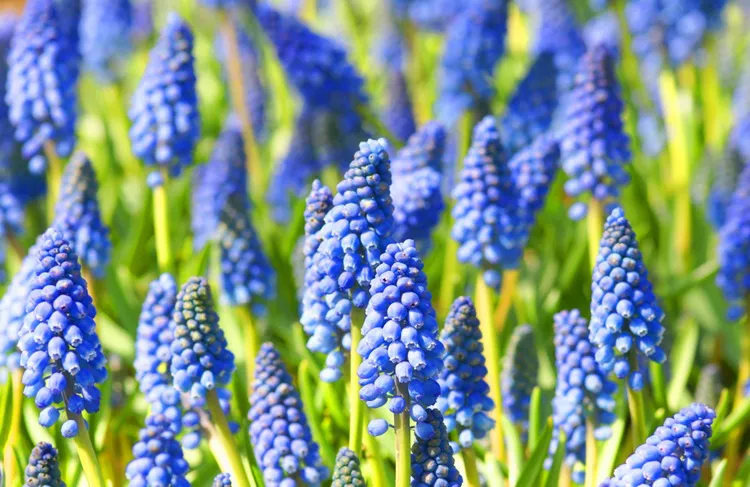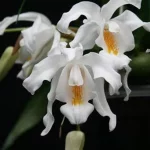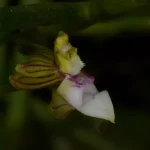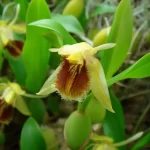The Grape Hyacinth (Muscari) is a charming springtime flower that blooms with clusters of deep blue or purple bell-shaped blossoms. Known for its fragrant scent and unique appearance, this flower carries rich symbolism across cultures. The Grape Hyacinth’s delicate beauty, combined with its strong associations with renewal and rebirth, makes it a powerful symbol. In this article, we will explore the meaning and symbolism of the Grape Hyacinth, including its significance in terms of color, biblical references, its use in tattoos, and its meanings in love and death.
Grape Hyacinth Flower Symbolism
The Grape Hyacinth, with its bright blue and purple flowers, holds numerous symbolic meanings. In many cultures, it is viewed as a symbol of spring, rebirth, and new beginnings. Its small, bell-shaped flowers and clusters of petals symbolize the gentle arrival of new life and the potential for growth.
Symbol of Rebirth and New Beginnings
As a flower that blooms early in the spring, the Grape Hyacinth is closely associated with the concept of rebirth. The arrival of this flower signals the end of the harsh winter months and the start of a new season full of possibility and growth. The flower’s symbolism of new beginnings is reflected in its seasonal appearance, as it brings a sense of freshness and rejuvenation.
For those experiencing personal or emotional renewal, the Grape Hyacinth serves as a reminder of the possibility of starting anew. Whether it’s overcoming a challenge or embarking on a new chapter in life, the flower represents the potential for growth and transformation.
Symbol of Joy and Happiness
Grape Hyacinths are known for their bright, vivid colors, which are often associated with happiness and joy. The joyful, cheerful appearance of these flowers can lift the spirits and bring positivity into one’s life. In this sense, Grape Hyacinths symbolize the lightheartedness and happiness that come with spring and the beauty of nature.
The symbolism of joy is also reflected in the flower’s association with celebration. Many people use Grape Hyacinths in bouquets and floral arrangements to mark special occasions, including births, weddings, and anniversaries, as a symbol of happiness and the hope that these positive emotions will continue to flourish.
Symbol of Humility
Though small in size, the Grape Hyacinth’s quiet beauty and simplicity convey a sense of humility. The flower blooms in clusters, representing the idea that strength and beauty can often come from smaller, more modest things. As such, the Grape Hyacinth can also symbolize humility and the ability to appreciate the small, seemingly insignificant moments in life.
This aspect of the Grape Hyacinth’s symbolism encourages people to stay grounded and humble, appreciating the simple joys of life without the need for grandeur or excess.
Grape Hyacinth Flower Meaning
The Grape Hyacinth is a flower that holds deep personal meaning for many. Beyond its symbolic associations with rebirth and humility, it carries specific interpretations that align with themes of love, friendship, and spiritual growth. Let’s explore these meanings in more detail.
Meaning of Friendship and Affection
Grape Hyacinths are often seen as symbols of friendship and affection. The compact clusters of blooms convey warmth and closeness, making them a popular choice for expressing platonic love and appreciation. If you’re looking to show your gratitude or affection for a friend, gifting Grape Hyacinths can be a meaningful gesture, as it symbolizes a bond built on mutual care and understanding.
The Grape Hyacinth’s humble, sweet appearance represents the quiet, nurturing strength of true friendship—one that doesn’t need to be loud or showy but remains strong and supportive through all seasons.
Meaning of Love and Devotion
The Grape Hyacinth is also closely associated with romantic love and devotion. Its delicate flowers represent the tenderness of love, while its color variations add an additional layer of meaning. The Grape Hyacinth’s early blooming season mirrors the idea of love blossoming and growing over time. Just as the flower pushes through the cold of winter to bloom in the spring, so too can love flourish despite the challenges life may present.
In relationships, the Grape Hyacinth serves as a symbol of enduring devotion and the promise of new growth in love. It suggests that love, much like the flower, can withstand the tests of time and continue to thrive.
Meaning of Strength and Resilience
The Grape Hyacinth, despite its delicate appearance, is a hardy plant that can thrive even in challenging conditions. This resilience makes it a symbol of inner strength and the ability to overcome adversity. Its ability to survive and bloom year after year, even in colder climates, is a reminder of the strength that lies within individuals to navigate life’s difficulties.
In moments of struggle or hardship, the Grape Hyacinth serves as a reminder that strength can be found in gentleness and persistence. It encourages people to press forward and find the courage to bloom, no matter the conditions.
Grape Hyacinth Flower Color Meaning
The color of a flower can greatly influence its symbolic meaning, and the Grape Hyacinth’s vibrant shades of purple, blue, and occasionally white, give it various interpretations.
Purple Grape Hyacinth
Purple Grape Hyacinths symbolize spirituality, peace, and contemplation. The rich purple color is often associated with wisdom and a deeper understanding of life. In spiritual terms, purple is seen as a color that connects the earthly to the divine, representing a journey of self-discovery and connection to higher knowledge.
Purple Grape Hyacinths can also represent the dignity and grace that come with time and experience. Their deep, majestic color signifies the quiet strength that comes with a life well-lived, filled with growth and learning.
Blue Grape Hyacinth
Blue Grape Hyacinths, which are the most commonly seen variety, represent tranquility, calm, and peace. The color blue is often associated with serenity and emotional healing, making the blue Grape Hyacinth a symbol of inner peace and balance. It encourages a sense of calm in the face of adversity and offers a gentle reminder to take time to rest and recharge.
The blue hue of the Grape Hyacinth can also symbolize trust and loyalty, qualities that are especially valued in relationships. When gifted to a loved one, blue Grape Hyacinths can signify unwavering support and a promise to stand by them through thick and thin.
White Grape Hyacinth
Though less common, the white variety of Grape Hyacinth symbolizes purity, innocence, and new beginnings. White flowers, in general, represent the idea of starting fresh and embarking on a clean slate, free from the past. White Grape Hyacinths can be used to mark significant transitions, whether in personal life, relationships, or spiritual growth. They convey a sense of hope and possibility, encouraging the recipient to embrace the future with an open heart.
Grape Hyacinth Flower Meaning in the Bible
While the Grape Hyacinth itself does not specifically appear in the Bible, its symbolism can be linked to several biblical themes. Flowers in general are used throughout scripture to represent beauty, grace, and God’s creation, and the Grape Hyacinth fits these themes well.
Symbol of New Life and Resurrection
The Grape Hyacinth’s bloom in springtime aligns with biblical concepts of new life and resurrection. In the Christian faith, spring is often seen as a time of renewal, as it marks the resurrection of Jesus Christ. The Grape Hyacinth, by blooming during this season, can be seen as a symbol of spiritual rebirth and the eternal promise of renewal through faith.
The Grape Hyacinth’s early arrival reminds believers of the hope that comes with every new season and the belief that every difficulty is followed by a time of resurrection and restoration.
Symbol of God’s Beauty and Creation
In the Bible, flowers are frequently used as symbols of God’s beauty and divine creation. The Grape Hyacinth, with its delicate flowers and vibrant color, is a reflection of the creative power of God. Its symbolism in the Bible would align with verses that highlight the beauty of nature as evidence of God’s handiwork and His ability to provide for all creatures.
See Also: Goldenrod Symbolism and Meaning in Love, Death & Bible
Grape Hyacinth Flower Meaning in Tattoos
The Grape Hyacinth, due to its rich symbolism, is also a popular choice for tattoos. People who choose this flower often do so to represent personal qualities such as growth, resilience, and renewal.
Symbol of Personal Growth and Transformation
For many, the Grape Hyacinth tattoo serves as a reminder of their personal growth and transformation. The flower’s emergence after winter represents a fresh start and the strength to overcome obstacles. A Grape Hyacinth tattoo can be a visual representation of someone’s journey through tough times and their commitment to evolving into a stronger person.
Symbol of Hope and New Beginnings
A tattoo of the Grape Hyacinth can symbolize hope for the future and the promise of new beginnings. It is an ideal tattoo for someone embarking on a new chapter in life, such as after a major life change or the beginning of a new relationship. The flower’s symbolism of renewal makes it a powerful symbol for those seeking to mark a significant, positive shift in their lives.
Grape Hyacinth Flower Meaning in Love
In love, the Grape Hyacinth carries meanings of devotion, fidelity, and the tender qualities of affection. It represents the idea of love blossoming gently and steadily, much like the flower itself.
Symbol of Romantic Love
The Grape Hyacinth is often given as a symbol of love that is pure, enduring, and kind. Just as the flower appears early in the season, it can symbolize the beginning of a new romantic relationship that holds promise for growth and stability. It suggests a love that will withstand time, just as the flower returns year after year.
Symbol of Long-Term Commitment
The resilience of the Grape Hyacinth is also associated with long-term commitment in relationships. People who give or receive Grape Hyacinths may see it as a symbol of unwavering devotion and a promise to continue supporting each other through thick and thin. It speaks to the strength of love that is able to endure through life’s ups and downs.
Grape Hyacinth Flower Meaning in Death
While Grape Hyacinths are not commonly associated with death in the same way as other flowers, they do carry meanings of transformation and the cycle of life, which can be relevant when reflecting on the themes of life and death.
Symbol of the Cycle of Life
The Grape Hyacinth’s symbolism of rebirth and new beginnings can be applied to the concept of death as well. It reminds us that death is a natural part of the life cycle, and from every end comes a new beginning. For those grieving, the Grape Hyacinth can represent the hope that life continues in some form, offering comfort that death is not an end but a transition.
Symbol of Eternal Life
In certain contexts, the Grape Hyacinth may also symbolize eternal life. Its yearly return and ability to bloom again after the winter are often seen as metaphors for the continuation of life beyond death. For many, this connection brings comfort and reassurance, knowing that the cycle of life is ongoing.
Conclusion
The Grape Hyacinth, with its vibrant colors and delicate form, holds deep symbolism across cultures and beliefs. Whether symbolizing love, resilience, new beginnings, or the cycle of life, it serves as a reminder of nature’s ability to renew and grow. From its use in tattoos to its meaning in the Bible, the Grape Hyacinth represents the beauty of life, love, and personal transformation. As a flower that thrives in difficult conditions and returns year after year, it offers hope and a message of enduring strength.
Related topics:













